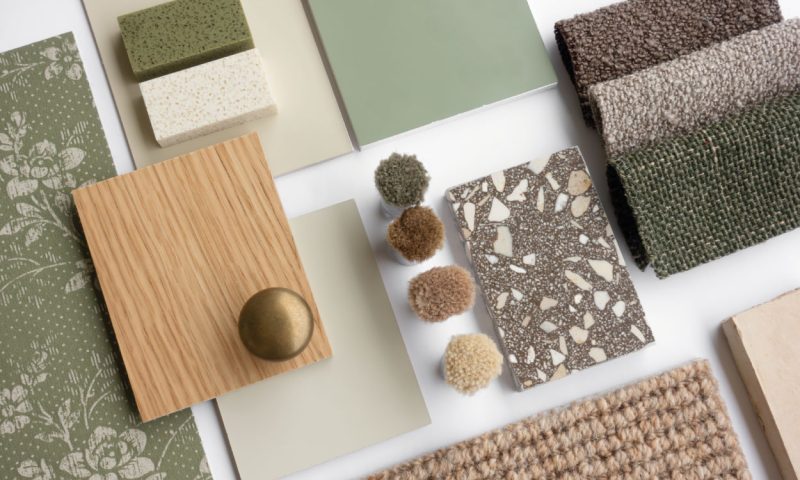A well-planned interior design does more than fill your home with appealing décor – it sets the stage for comfort, creativity, and daily enjoyment. According to a recent analysis by Houzz, homeowners are increasingly drawn to designs that express personality through natural textures and well-curated details.
By thoughtfully combining various styles, colours, and materials, you can produce a home environment that reflects your taste while inviting warmth and relaxation.
Embracing Natural Warmth and Texture
One way to introduce organic character is through interior wood panelling, which helps create a cosy ambience. Whether used as a statement wall in your living room or as a subtle accent in a hallway, wood panelling blends with both modern and traditional aesthetics.
Lighter tones of wood, like pine or birch, lend an airy mood to smaller spaces, whereas darker stains evoke a sense of classic elegance. Beyond its visual appeal, wood panelling contributes an acoustic benefit by softening echoes, making rooms feel more private. In a home where open-plan layouts are common, this subtle feature can help define individual zones without the need for additional walls.
To enhance the warmth of wooden elements, consider pairing them with soft textiles, such as wool or linen, which can provide an inviting contrast. Incorporating natural fibres in upholstery, rugs, and curtains further reinforces a cohesive and organic aesthetic. Additionally, wood can be integrated into furniture pieces, shelving, or even ceiling beams to create a seamless connection throughout the home.
Layering Colour and Contrast
Another way to achieve stylish design is by balancing bold colours with neutral backdrops. Bright cushions or a striking area rug can stand out against tranquil grey or beige walls, creating a vivid focal point. By integrating pops of colour sparingly – through throw blankets, artwork, or decorative items – you maintain visual interest without overwhelming the space. Incorporating a signature hue consistently in each room also fosters a sense of continuity. The harmony of a distinct palette helps tie together different pieces, allowing them to complement rather than compete.
Experimenting with different textures can also elevate colour contrast. For instance, pairing a velvet sofa with a linen cushion or a glossy coffee table with a matte-finished lamp can add depth and visual intrigue. If you prefer a more understated look, consider tonal layering – using different shades of the same colour family – to create a sophisticated and nuanced effect.
Curating Timeless Pieces
When selecting furnishings, consider blending timeless items with subtle modern touches. A classic armchair or an elegant dining table can serve as a sturdy anchor for your décor. Around these core elements, introduce contemporary lighting fixtures or sculptural accessories that elevate the overall look.
This layered approach respects history and craftsmanship while demonstrating an openness to fresh ideas. Reflective surfaces—like mirrored side tables or glossy cabinetry—can also amplify natural light, further enlivening a refined setting.
To ensure your interior remains timeless, invest in high-quality materials and craftsmanship. Pieces made from solid wood, natural stone, or handwoven textiles tend to age gracefully, developing character over time. Meanwhile, minimalist and functional designs ensure longevity and adaptability, allowing you to refresh the space with new accents without needing major renovations.
Harmonising Function and Beauty
A stylish interior does more than dazzle the eye; it fulfils practical needs too. Open shelves in the kitchen can house both functional essentials and decorative dishware, merging utility with artistry. Custom cabinets or built-in storage ensure clutter stays hidden while you display curated personal items.
Well-placed rugs delineate lounging areas in larger rooms, making them feel intimate. By thoughtfully positioning furniture to encourage conversation and movement, you enrich daily life without sacrificing aesthetics.
In multifunctional spaces, such as home offices or open-plan living areas, modular furniture can provide flexibility. Foldable desks, extendable dining tables, or storage ottomans allow you to adapt the space to different needs while maintaining a sleek and cohesive design.
Infusing Personal Touches
Personalisation plays a key role in creating a home that feels truly yours. Family heirlooms, vintage finds, or handcrafted décor can tell a story while adding character to a space. Displaying books, framed photographs, or travel souvenirs allows you to express your personality through design. Adding greenery, such as potted plants or fresh flowers, enhances the connection to nature and introduces a sense of vitality into the home.
For an added layer of individuality, consider incorporating DIY or bespoke elements. Hand-painted murals, custom furniture upholstery, or artisanal ceramics can provide one-of-a-kind details that make your home feel uniquely yours.
Maximising Natural Light
Lighting is a crucial factor in any interior design. Large windows, sheer curtains, and strategically placed mirrors help harness natural light, making rooms feel more spacious and inviting. Layered lighting, including task and accent lighting, further enhances functionality and ambience.
Maximising natural light can also be achieved by choosing reflective finishes, such as glossy paint or metallic accents, which bounce light around the room. Positioning furniture to avoid obstructing windows and using lightweight, translucent materials for curtains can further enhance the brightness of a space.
Designing a visually appealing interior requires deliberate choices that blend aesthetic unity with practical function. Whether employing for warmth or layering soft furnishings for colour depth, your home should feel harmonious yet reflective of individual tastes.
According to data from Houzz, an increasing number of homeowners invest in personalising their spaces with natural elements, colourful accents, and carefully chosen furniture. By striking a balance between timeless elegance and modern flair, you not only achieve a stylish look but also create a welcoming atmosphere that resonates every day.
The post Creating a Stylish and Functional Home: The Art of Interior Design appeared first on UK Home Improvement.
